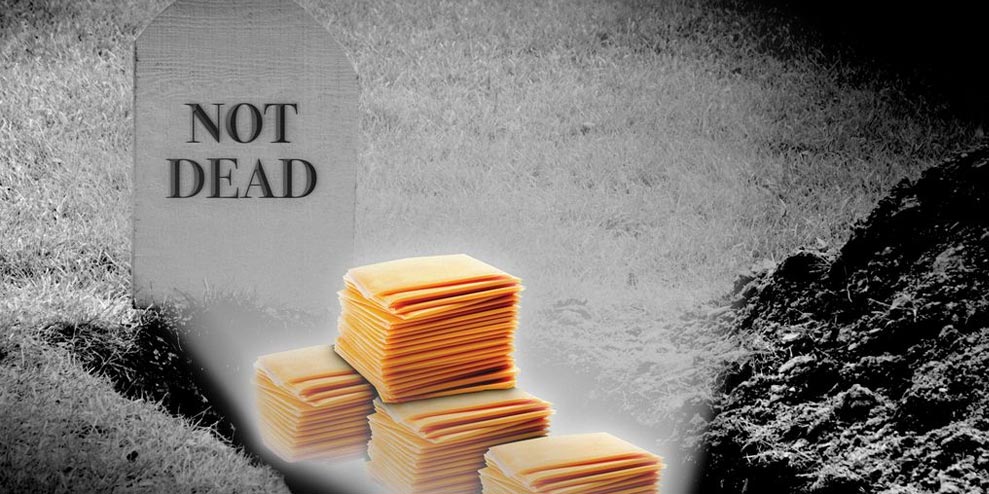American cheese, napkins and golf are all enjoying a resurgence
“That simplification of the consumer perspective is why we’re seeing a lot of these categories come back,” he says. “The reality is the time pressures that we all dreamt would be taken away as part of this work-from-home [situation]are really magnified, so consumers are trying to simplify their lives at home and that’s leading into category choices.”
If marketers pay attention now, and adjust supplies accordingly, they could continue to win in these areas post-pandemic, experts say. “It’s now creating a marketing opportunity,” says Andy Mantis, chief business officer of 1010reveal at 1010data, which provides analytical intelligence to the financial and retail markets, noting that categories gaining ground now could be highlighted in marketing promotions. “It’s really providing a different insight to assortment planning and the associated marketing to get more share of customers’ wallets.”
Here are the items and categories revived during the pandemic:
Napkins
“As a result of consumers spending more time at home cooking meals for their families, the napkin category, including the Vanity Fair Napkin brand, is seeing an increase in shoppers and sales since the pandemic started,” says Katie Kolesky, senior director of brand building at the Georgia-Pacific-owned brand. “We’re doing everything we possibly can to meet our consumers’ needs during this incredibly stressful time.” That includes Vanity Fair’s recent creation, with Joan Creative, of an online cooking show to help chefs during the pandemic.
American cheese
“I think in times of uncertainty consumers turn to brands that they trust,” CEO Miguel Patricio said on a conference call in late April. He says that right now, consumers want to experiment less with new brands. “Our brands represent comfort for people and I think that the consumers are coming back to big brands,” Patricio said.
Golf
Golf was never the sport of choice for younger generations, which led to its decline in recent years. It was at odds with millennials’ values and preferences—the rules were overly complicated, the game took the time-starved group too long to play, and golf is not known for its environmental sustainability, according to Matt Powell, VP and senior industry advisor of sports at NPD Group. But now, golf is on an upswing—a trend that began last year as more boomers retired and tried the sport, and that is continuing during the pandemic. The no-contact sport is one of only a few mostly open for business during the lockdowns. In March, sales of golf practice nets and screens increased 144 percent; swinging and putting mats were up 138 percent over last year, according to NPD. “People are really clamoring to go out and do stuff and we could see golf take off again really quickly,” says Powell.
Cereal
Millennials and others weren’t spending much time on breakfast at home before the pandemic; cereal was particularly hard hit. Younger generations have gravitated toward either on-the-go meals or trendier options like avocado toast and spinach smoothies, which contributed to cereal’s decline. But now, with more kids at home and in need of an easy meal they can make themselves, the category is on the rise.
“Cereal is easy to prepare; you can tell your kid to get a bowl of cereal,” says Kearney’s Portell. “It’s easier than making a scrambled egg, and certainly easier than making a soufflé.”
Nielsen data shows that breakfast cereal sales rose 35 percent for the week ended April 25, compared with the year-earlier period. For the two months ended April 25, cereal was up 34 percent.
Beer
Beer had been taking a backseat to trendier beverages including hard cider and spiked seltzer, but now it’s back. 1010data’s Mantel says many consumers are ordering alcohol to be delivered. In March and April, online beer sales were up more than 100 percent, he says. Plus, because they want to make fewer trips to the grocery store, shoppers are buying in bulk, which means more cases of brands like Budweiser and Coors, which are enjoying a renaissance, according to reports.
–
This article first appeared in www.adage.com
Seeking to build and grow your brand using the force of consumer insight, strategic foresight, creative disruption and technology prowess? Talk to us at +971 50 6254340 or mail: engage@groupisd.com or visit www.groupisd.com/story




